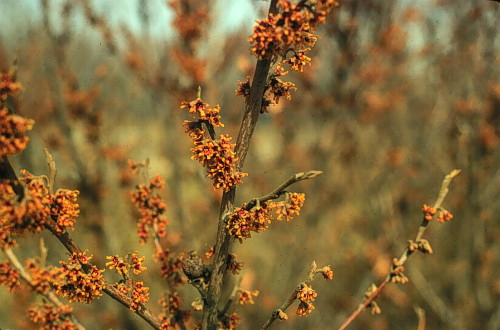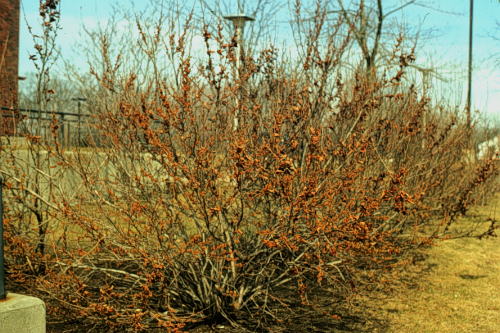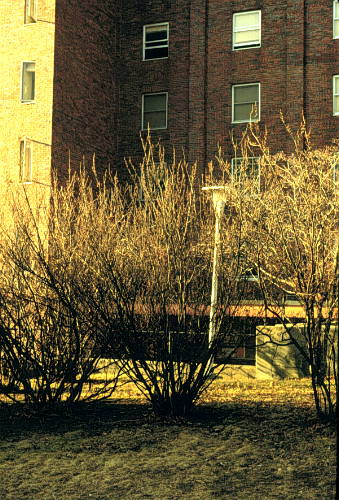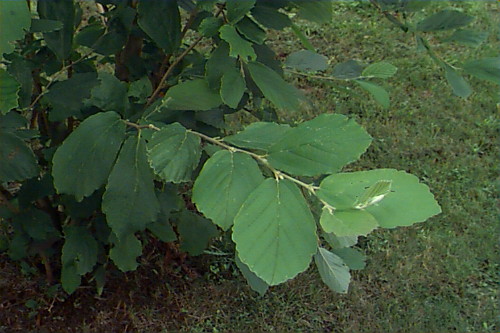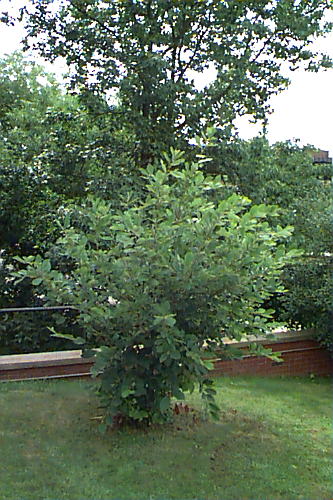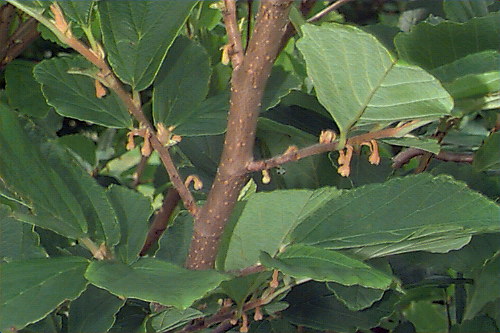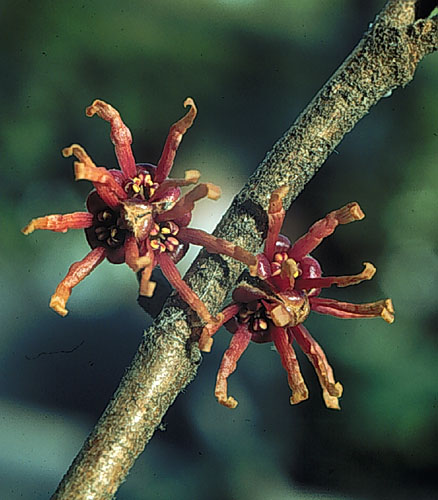Hamamelis vernalis
Vernal Witchhazel
Hamamelidaceae
ExpandHabitat
- native to Missouri down through Louisiana
- zone 5
Habit and Form
- a medium-sized deciduous shrub
- multistemmed and rounded
- suckers
- 6' to 10' tall
- dense
- medium texture and growth rate
Summer Foliage
- deciduous, simple leaves
- alternate leaf arrangement
- 2" to 5" long and half as wide
- pointed leaf apex
- serrated, lobed margins
- reddish purple new growth
- medium green leaf color
Autumn Foliage
- golden yellow fall color
- very showy
Flowers
- yellow flowers, occasionally reddish
- 0.5" across
- strong odor
- blooms late winter
- long lasting
Fruit
- dehiscent capsule
- matures in September
- black seeds
- not ornamentally important
Bark
- gray bark
- pubescent young stems
Culture
- transplant from container
- prefers moist, well-drained soil, but does well in many situations
- full sun
Landscape Use
- mass or group plantings
- screen or hedge
- early color
- border
- for fall color of foliage
Liabilities
- suckers
- relatively problem free
ID Features
- naked bud vegetative buds, tomentose
- flower buds are grouped, tan and pubescent
- very pubescent twigs, buds, leaves
- large, showy, yellow late winter flowers
- flowers have a strong odor
- reddish purple new growth
Propagation
- by cuttings
- by seed
Cultivars/Varieties
'Autumn Embers' - One of the best witchhazels for brilliant fall color (especially in colder areas), the leaves are reported to turn red-purple in some years. The blooms are orange in spring.
'Christmas Cheer' - Becoming more popular in the trade, this plant is noted for its early flowering. While plants have been known to start flowering by Christmas, such performance is not likely depending on USDA zone and seasonal weather. The flowers are red-purple and reportedly they exude a strong, sweet fragrance.
'Lombart's Weeping' - This plant is quite unique among witchhazels, as it matures to form a small tree (to 6' tall) with branches that weep to the ground. The blooms are orange-red early in the season (January to March). This plant is confused in the trade, thus plants labeled as such may exhibit weeping habit, irregular growth or low-growing character.
'Sandra' - A selection most noted for its orange-red bright fall color, although this trait seems to be more pronounced in northern locations and may vary yearly. The flowers are bright yellow in spring. Emerging leaves are said to carry a purplish overlay, as well.
